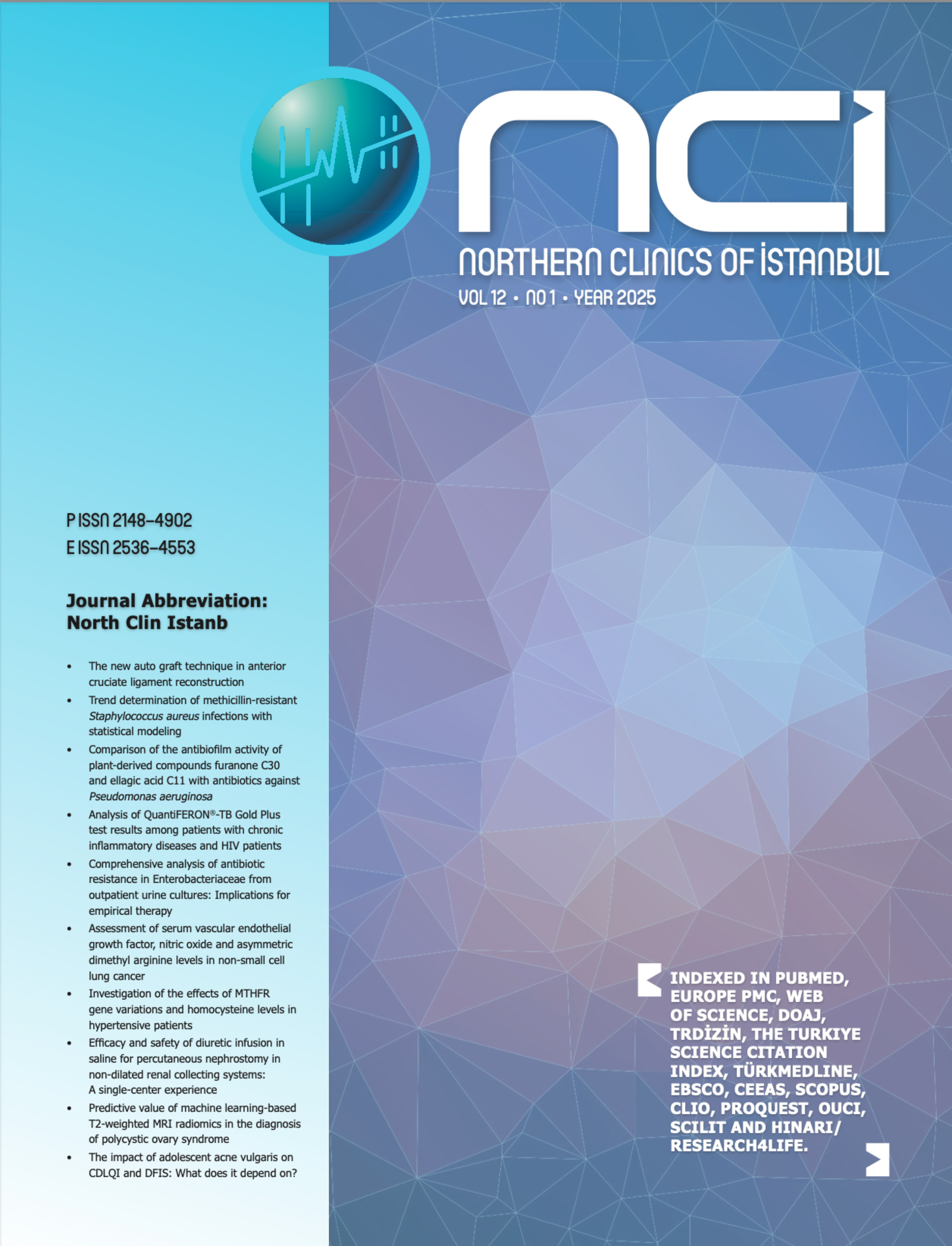Assessment of interobserver variability in Gleason grading for prostate carcinoma
Ilkay Cinar, Esma CinarDepartment of Pathology, Giresun University Faculty of Medicine, Giresun, TurkiyeObjective: The Gleason Score is the most widely used grading system for prostate adenocarcinoma and it is the strongest predictor of the patient's clinical outcome similar to other grading systems, and, plays a key role in determining the most effective treatment strategy for the patient. The Gleason scoring system is subject to both intraobserver and interobserver variability. This study aims to assess the interobserver agreement for prostate adenocarcinoma within the Gleason grading system at our center, as well as identify contributing factors.
Methods: A total of 119 cases diagnosed with prostatic adenocarcinoma, Giresun Training and Research Hospital were included in the study. Tissue samples from the cases had been subjected to routine laboratory procedures; three micron sections were obtained from formalin-fixed paraffin blocks and stained H&E.Statistical investigation was conducted on the agreement between Gleason pattern, Gleason sum score, and grade group data among three observers.
Results: In the evaluation, interobserver agreement was found to be minimal. (Gleason pattern k=0.285, total Gleason sum score k=0.309, Grade group k=0.313). The assessment indicated higher agreement in determining low grade compared to high grade, with a decrease in interobserver agreement as the grade increased. Moreover, interobserver agreement demonstrated an increase over the years (p<0.001).
Conclusion: The findings underscore the ongoing inadequacy of interobserver agreement in the Gleason scoring system. Improvement suggestions involve conducting studies to ascertain in-clinic interobserver agreement enhancing training, facilitating information sharing, and employing accessible and easily applicable artificial intelligence-supported programs.
Prostat karsinomunda Gleason derecelemesinde gözlemciler arası uyumun değerlendirilmesi
Ilkay Cinar, Esma CinarGiresun Üniversitesi Tıp Fakültesi, Patoloji Anabilim Dalı, GiresunAmaç: Gleason Skoru, prostat adenokarsinomu için en yaygın kullanılan derecelendirme sistemidir ve en güçlü prognostik faktördür. Hastaya en uygun olan tedavi stratejilerini belirlemede anahtar bir role sahiptir. Ancak Gleason skorlama sistemi diğer derecelendirme sistemlerinde olduğu gibi hem gözlemci içi hem de gözlemciler arası değişkenliğe tabidir. Bu çalışma, merkezimizdeki Gleason derecelendirme sistemi içinde prostat adenokarsinomu için gözlemciler arası uyumu değerlendirmeyi ve bunu etkileyen faktörleri belirlemeyi amaçlamaktadır.
Yöntem: Giresun Eğitim ve Araştırma Hastanesi'nde prostat adenokarsinomu tanısı almış toplam 119 vaka çalışmaya dahil edildi. Vakalardan alınan doku örnekleri rutin laboratuvar prosedürlerine tabi tutuldu; formalinle sabitlenmiş parafin bloklarından üç mikron kesit elde edildi ve H&E ile boyandı. Üç gözlemciye ait Gleason paterni, Gleason toplam skoru ve Grade Grup verileri arasındaki uyum düzeyi istatiksel yöntemler ile değerlendirildi.
Bulgular: Değerlendirmede, gözlemciler arası uyumun minimal olduğu bulundu. (Gleason patern için k=0,285, toplam Gleason toplam skoru için k=0,309, grade grubu için k=0,313). Düşük derecelerde, yüksek derecelere kıyasla daha yüksek uyum olduğu, derece arttıkça gözlemciler arası uyumun azaldığını görüldü. Ayrıca, gözlemciler arası uyum yıllar içinde bir artış göstermekte idi(p<0,001).
Sonuç: Bulgular, Gleason puanlama sisteminde gözlemciler arası uyumun devam eden yetersizliğini vurgulamaktadır. İyileştirme önerileri, klinik içi gözlemciler arası uyumu tespit etmek için çalışmalar yürütmeyi, eğitimi geliştirmeyi, bilgi paylaşımını kolaylaştırmayı ve erişilebilir ve kolayca uygulanabilir yapay zeka destekli programlar kullanmayı içermektedir. (NCI-2024-8-1)
Manuscript Language: English





















